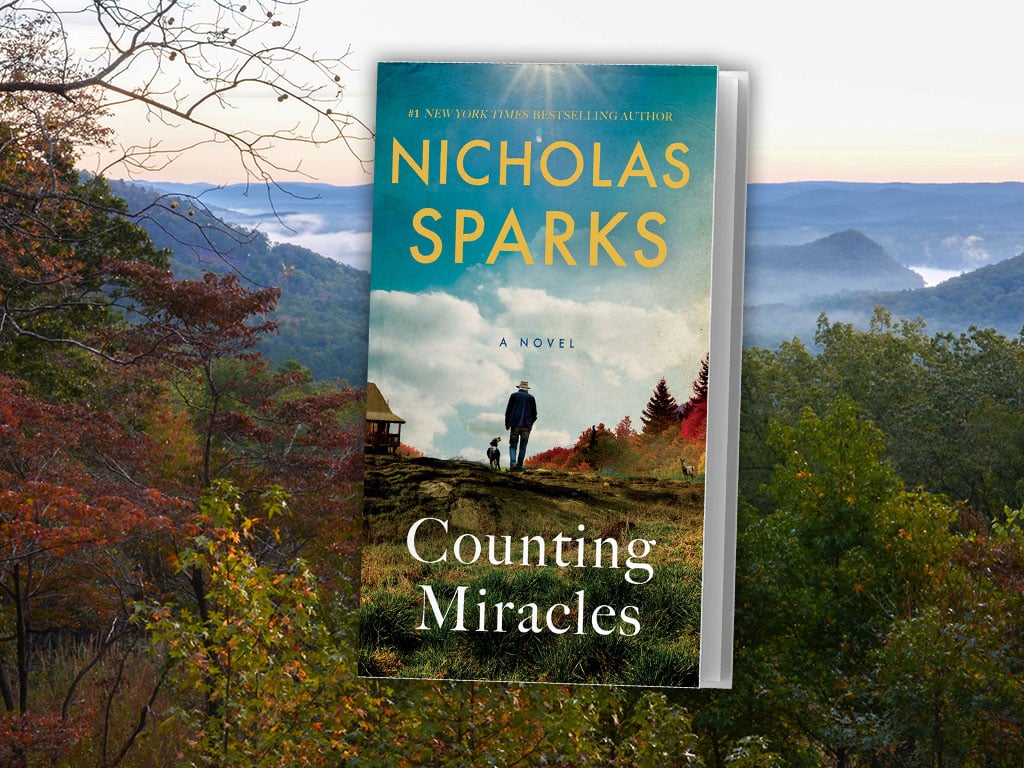
Crystal Cockman reviews Counting Miracles by Nicholas Sparks

This book is set in our very own Asheboro and strongly features the Uwharrie National Forest. The landscape is keenly portrayed, with images of trails, forest service roads, fire lanes, rocky outcrops, creeks, valleys and ridges. Anyone who has spent much time in the Uwharries would find the book to be pretty accurate in its description.

One prominent symbol in the book, a white deer, also is known from a ghost tale told in Joe Moffitt’s book “An Afternoon Hike into the Past.” In Joe’s book, the story is called the “ghost of white deer valley,” and the tale is not exactly the same as the ones described Counting Miracles, but is strikingly similar in message – a white deer is a spirit deer and needs to be protected. It’s pretty neat that he chose something that is a known figure of actual ghost stories told in the Uwharries.
Relevant to the conservation work done by TRLT, the author points out the rapid development being experienced in this area. One passage in particular stands out: “Years earlier, Jasper remembered, he’d tried to stop the developer from building the subdivisions the boy’s family lived in. The town of Asheboro had been creeping ever southward, getting closer and closer to his cabin, and he’d complained to the county commissioner…now there were tracts of identical homes where once there was nothing but virgin forest and farmland.”
At another point in the story, another main character remarks, “…you’ve got the national forest. If I lived here, I’m sure I’d be running the trails there every day. I’ve done a lot of that in the last couple years at various national parks, and I’ve come to believe that good mental health requires spending time in nature on a regular basis.” Another nod to the significance of natural areas for quality of life.

For those who visit the North Carolina Zoo, you’ll recognize the route they take from the North American entrance, past the cougar and alligators, to the polar bear and arctic fox. Other prominent local spots include Coach’s bar and grill, Kickback Jacks, and the Hampton Inn.
I also found it pretty interesting that one of the main characters who lives in a cabin surrounded on three sides by the Uwharrie National Forest, near the end of the story was in a hospital half-watching a discovery channel show about volcanoes, not caring since “there were no volcanoes within a thousand miles of Asheboro,” which is ironic, given that geologists believe the Uwharries were once a chain of volcanic islands, millions of years ago.
The crux of the story is really an allegory of the story of Job from the Bible, with one of the main characters paralleling the experience Job had. The author carefully weaves the plot lines of three main characters together, and in the end, you’re pleasantly surprised at how things work out. A beautifully written tale, the Uwharries provide the perfect setting for this plotline about love, loss, adventure, and the importance of family.